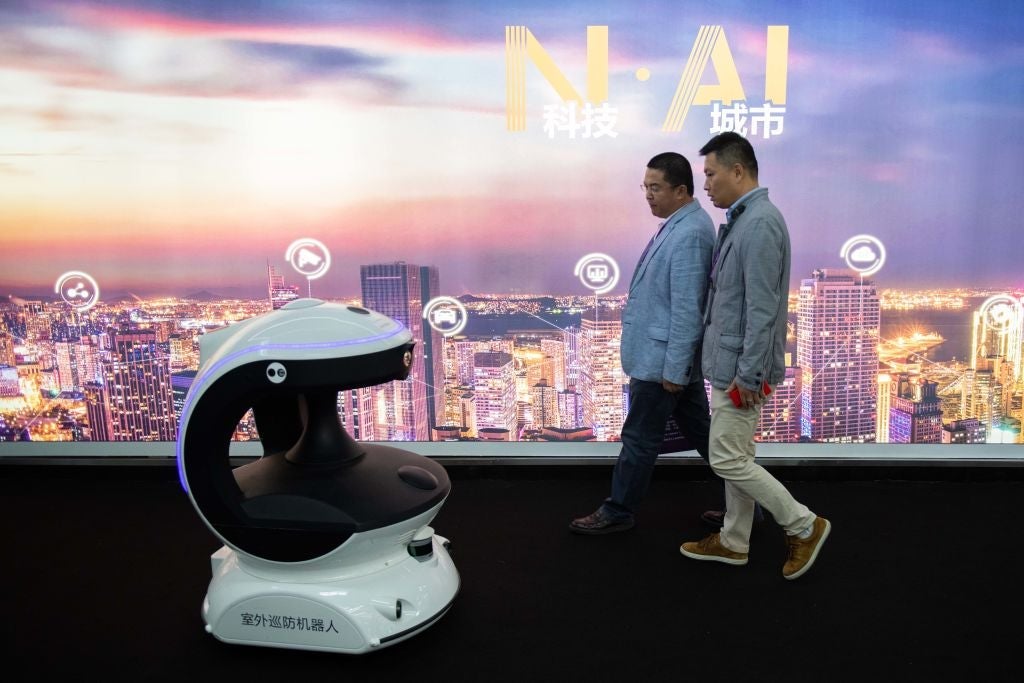

China’s demand for machine learning talent is booming, even as it lags behind in the supply of engineers.
While the US and Japan are producing more machine learning patents than any other country, China is making progress. According to data from Elsevier, between 2015 and 2019 the number of Chinese scientific publications on AI exploded from fewer than 11,000 to almost 25,000, with China overtaking the EU to become the world’s top producer of AI research.

Access deeper industry intelligence
Experience unmatched clarity with a single platform that combines unique data, AI, and human expertise.
China is also the leading source of demand for machine learning talent. As of mid-October, there were 5,717 machine learning-related jobs postings in China’s top five cities, including more than 2,000 in Beijing alone, according to data from Cityglobe.
While Bangalore had the greatest demand of any city, with 2,321 postings, the total for India’s top five cities was slightly lower at 4,547.

US Tariffs are shifting - will you react or anticipate?
Don’t let policy changes catch you off guard. Stay proactive with real-time data and expert analysis.
By GlobalDataThe major talent hubs, however, are currently located elsewhere. San Francisco and the wider Bay Area is the world leader in this regard, with an estimated 62,400 machine learning engineers, while New York comes in fifth with 24,000. It is India that provides the largest overall talent pool, with Bangalore, Mumbai, Delhi and Hyderabad together home to more than 127,000 engineers.
Cityglobe CEO Dr Marek Banczyk says: “China is not yet a dominant player in practical innovation in machine learning, as measured by patents, even within Asia – especially when compared with the leading position of Japan or the strong record of South Korea. However, it is certainly gathering momentum which, apart from the rapid growth in machine learning patents this year, is reflected in the record-high demand for machine learning engineers.
“This, in conjunction with a relatively scarce supply of machine learning talent in the Middle Kingdom, results in remarkably high wages offered to the Chinese machine learning engineers in Beijing or Shanghai, reaching the range of $3,500–3,900 per month. This is twice the salary of the average software developer and way more than the respective salaries in Lisbon or Mexico City.”
This is largely driven by government funding, with China’s public investment strategy ranked the best in the world last year by Tortoise Intelligence. The government’s stated ambition is to become the world leader in AI technology by 2030, an ambition backed with billions of dollars in funding.
The number of global patents in machine learning technologies is expected to triple in 2020, despite a projected 1% overall decline across all patents.
By the end of October, there were already 223 such patents filed compared with just 89 in the whole of 2019, according to Cityglobe data. Almost half of these were filed in Japan, with 30% coming from just two of its companies, NEC and NTT. Altogether, more than two-thirds of all machine learning patents have come from Asia in 2020, while six of the top ten companies are Japanese.
“The growth in demand for AI and machine learning is not only a Chinese phenomenon,” explains Banczyk. “We can see it also in Japan, India and South East Asia, as well as in the US.
“Such a trend, when analysed in the context of governmental strategies for robotics and AI, may suggest that the Covid-19 crisis has pushed the major global players into a new arms race of sorts. This time the race is focused on building armies of software developers among which the machine learning engineers appear to be the special forces.”
London is the leading source of machine learning talent in Europe, with an estimated 15,600 engineers – more than twice as many as its closest competitor, Madrid. In Latin America, Mexico City and Bogota both make it into the top 20 with more than 2,000 machine learning engineers each.
Silicon Valley’s San Jose had the third-highest demand for machine learning engineers, with 1,579 job postings, well ahead of New York’s 590. As with supply, London is the centre of Europe’s demand for machine learning talent, followed by Warsaw, Dublin and Krakow.







